So you’re thinking about building an airplane, and you’ve never done anything like this before. You are aware of the statistics that a large percentage of homebuilt aircraft aren’t completed by the original builders. What, you wonder, are some factors that will maximize your chance of success with this major hobby project that is about to consume large quantities of time and money?
Motivations
The reasons to build an aircraft vary. For many, the prime motivation—at least during the initial thought process—is eventual ownership of a dream aircraft…one that flies faster or farther or with more style than any factory-built machine you know or ever rented. For others, the building process itself is the primary motivation. You may know people who report the challenge and the thrill of building and then flying their own creations. The do-it-yourself urge appears strong among a significant percentage of Americans in every imaginable activity including aviation. Witness the home-improvement stores in every city and, if you search, the availability of kits to build everything from electronics to furniture to complete houses. We like making things.
Getting Real
A few first-time aircraft homebuilders have completed unbelievably difficult projects including the original design and scratch-building of every part of some complex airplane. But most people considering a homebuilt project would be wise to decide on a task that is much more easily achieved. In effect, every new builder must balance an often-conflicting set of objectives. If the finished aircraft is the only real motivation, the choice of aircraft will probably be dictated by the budget. In that case, the question is, “How much airplane can I afford that requires the least of my time and effort?” Quickbuild kits and factory or other professional assistance up to the maximum allowable under the law become important. But if the journey and not just the destination is important, the spectrum of possibilities widens. The number of building hours and the cost are less relevant because they can be spread out over more time.
Increasing the Odds
Whatever the motivation, most builders would agree that the primary objective in picking a project should be settling on one that you are likely to complete. Consider the general recommendations below. They are listed in the approximate order of importance…except that the family-oriented advice should be at the top of the list for many. Picking a project that fits into a maximum number of the following categories should maximize the chances for success:
1. A type of aircraft being built by others in your area. EAA chapters and other builder groups offer a chance to see work in progress and to participate before committing to a kit purchase. Doing this in advance also reveals the drawings and manuals, the quality of materials, and how well the parts fit.
2. An aircraft that can be built at home. If you lack a garage or a large workshop, consider building a temporary structure at home for the project. The time saved commuting and the motivation of a home project can be critical to achieving the goal.
3. Construction techniques you already know or want to learn. If you have woodworking tools and skills, seriously consider building a wood airplane. Modern glues and wood-preserving techniques allow wood aircraft to be as durable as those built of metal or composites. Or maybe you’ve always wanted to learn welding. Take a junior college or technical school welding course before committing to tackle an aircraft that will require welding skills.
4. An excellent construction manual. These days, most kit manuals are adequate, but it’s best to review a set or at least sample pages before buying the kit. Construction photos are often helpful, but exploded-view drawings are usually even better. Construction videos may also be of interest, but they should not substitute for clear drawings, blueprints or text in a manual.
5. A reputation for good factory support. The kit manufacturer should be willing and able to provide names and phone numbers of current builders and customers who have completed the company’s aircraft. Among the many questions that should be asked of builders, an assessment of factory support should be near the top.
6. An aircraft you have flown. Considering the investment that homebuilders have in their aircraft, a fly-before-buy policy is close to essential before writing the big check. Budget enough time and money to go where you can at least watch an example being flown. If the aircraft has two or more seats, arrange with the kit factory for a demo flight. Most companies find a way to charge for these flights but many count the cost toward kit purchase.
7. A project you can afford without straining. Make a realistic budget including tools that you will need. Some builders are surprised to find that an engine often costs as much as the airframe kit. And some builders—even first-timers—spend as much on instruments and avionics as they do on the airframe or the engine. There is nothing wrong with that as long as it doesn’t create personal or family tension.
8. Family support including help with construction. Sports and hobby widows are common in our society where husbands and fathers (and in some cases, wives and mothers) too often sacrifice family time to pursue other passions. Some first-time homebuilders have anticipated the problem and have countered it with a specific pact with the family. Example: “I’ll work on my plane no more than four weekday evenings and one weekend day each week.” Many have enlisted the family’s help in building the aircraft. These techniques help preclude the well-known AIDS hazard: aviation-induced divorce syndrome.
9. An aircraft in which you are physically comfortable. Complying with Item 6 should preclude building an aircraft in which you don’t fit…providing you pay careful attention. The excitement of sampling a gorgeous airplane has clouded the vision of more than one potential kit buyer who—when making engine noises in the cockpit of his partially complete dream—found that there was too little space for cross-country comfort. Especially if you can’t fly an example (maybe because it’s a single-seater), find one somewhere and ask permission to sit in it a while. Can you stretch out, open a chart, and avoid touching the canopy with your headset or hat?
10. One you will be pleased to fly. This summary category is more subjective than the others and relates to all of them. If your aircraft looks good and you are happy to be identified with it, that is a positive indicator. A few builders, however, have found that they chose the wrong airplane. It’s too slow to keep up with friends in the Saturday $100 hamburger fly-out. Or more likely, it is too fast or too slippery for the builder’s comfort as a pilot, especially in challenging wind or weather. If the owner enjoyed the building experience, the solution is to sell the aircraft and pick another project more carefully.
Some Aircraft
Using the December 2003 KITPLANES list of airplane kits, we have picked a few of the many possibilities for good first-time projects. Considering the recommendations, what are some likely candidate aircraft?
We have picked kits that:
- are $25,000 or less for the airframe kit. Most are much less.
- show a first-time builder time estimate of 1500 or less. Most are much less, and we list the factory-supplied estimates of first-time builder hours here.
- have at least 10 finished and flying.
- come from a company with a favorable reputation for customer support.
Except for two totally different New Kolb kits, we have limited the picks to one aircraft per company even though many might qualify. Because of the price and builder-hour limits we chose, most kits are welded-steel tubing and fabric where the fuselage comes as a completed weldment. But you will find a few sheet metal, composite and wood designs also.
20 Picks
Here they are in alphabetical order by company name. Kit prices are usually for the airframe only, not including the engine, prop, instruments, avionics or covering materials and paint. Check your choices on the web sites or by phone for more details.
Key:
M = metal construction, T&F = tube and fabric, W = wood, C = composite
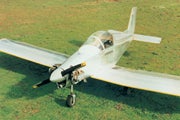 |
Bradley Aerospace Aerobat Single seat, 150 hours, 60 flown, M. $10,700 www.vortechonline.com/bradley |
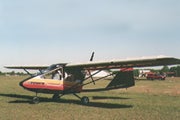 |
CGS Aviation Hawk II Arrow Two seats, trigear or tailwheel, 200 hours, 120 flown, T&F. $16,730 www.cgsaviation.com |
 |
Fisher Flying Products Super Koala Two seats, 500 hours, 75+ flown, W. $8350 www.fisherflying.com |
 |
Flightstar Inc. model IISC Two seats, 150 hours, 90 flown, T&F. $17,395 www.flyflightstar.com |
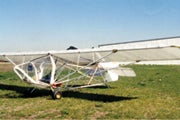 |
Golden Circle Air T-Bird I. Single seat, trigear or tailwheel, 100 hours, 4000+ flown, T&F. $11,326 www.goldencircleair.com |
 |
Green Sky Adventures Micro Mong Single seat, 400 hours, 17 flown, M, T&F. $8500 www.greenskyadventures.com |
 |
Hipp’s Superbirds J-3 Kitten/Super Kitten Single seat, 325 hours, 75+ flown, C, W, T&F. $8893 858-749-3986 |
 |
JDT Enclosed Cockpit 1300Z. Formerly Ison Aircraft. Single seat, 400 hours, 231 flown, W. $3845 574-775-2151 |
 |
Loehle Aircraft Corp. Sport Parasol Single seat, 350 hours, 69 flown, W. $4495 www.loehle.com |
 |
New Kolb Mark III Classic Two seats, trigear or tailwheel, 500 hours, 304 flown, C, M. $22,025 tnkolbaircraft.com |
 |
New Kolb Pelican Sport Two seats, trigear or tailwheel, 900 hours, 40 flown, C, M. $22,025 www.tnkolbaircraft.com |
 |
Preceptor Aircraft Ultrapup. Two seats, 450 hours, 100 flown, T&F. $17,295. www.preceptoraircraft.com |
 |
Quad City Ultralights Challenger II Two seats, 100 hours, 2000+ flown, T&F. $8995 www.quadcitychallenger.com |
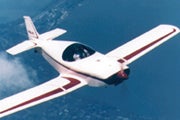 |
Rand-Robinson Engineering KR-2 Two seats, trigear or tailwheel, 1000 hours, 1250 flown, C, W $8500 www.fly-kr.com |
 |
RANS Inc. S-12XL Airaile Two seats, 300 hours, 870 flown, T&F. $15,550. 785/625-6346 www.rans.com |
 |
SkyStar Aircraft Kitfox Series 7. Two seats, trigear or tailwheel, 700 hours, 800+ flown, C, T&F. $14,995 www.skystar.com |
 |
Sonex Ltd. Sonex Two seats, trigear or tailwheel, 700 hours, 50 flown, M. $11,985 www.sonexaircraft.com |
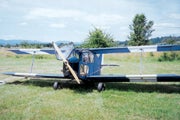 |
Thunderbird Aviation, Inc. Hiperlight SNS-8 One seat, 150 hours, 600 flown, T&F. $15,900 www.hiperlight aircraft.com |
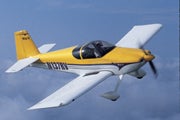 |
Van’s Aircraft RV-7/7A Two seats, trigear or tailwheel, 1500 hours, 18 flown, M. $17,075 www.vansaircraft.com |
 |
Zenith Aircraft Company Zodiac CH 601 HD Two seats, 750 hours, 40 flown, M. $12,620 www.zenithair.com |
Other Considerations
In the list above, note that high speed and enough seats for the whole family are not part of the criteria. For a first project, the act of finishing and flying is enough of an accomplishment. Many who succeed on their first attempt may build a second aircraft at some point…one that will meet more specific objectives for the types of flying they actually do.
But even if that does not happen, the building project has been a success, and for most builders, it is the thrill of a lifetime. Even a simple, slow, single-seat aircraft will achieve the goal when it flies. For long cross-country family trips, rental airplanes may serve the need.
The term first-time builder implies that the homebuilding process is compelling enough for many to build again. And for a lot of successful first-time builders, that is exactly what happens.





An updated version of this article would be great.
Yeah I agree that with the COVID-19 situation a lot of rusty or future pilots may be looking at first time build kits.
Updated article with an updated list and pricing would be great! 16-17 years, we’re ready for it!
First time material build should be super easy one. With clear plans an instruction booklet. Simplex comes to mind for all wood. The big problem is the Ways an Means. What to look out for, as far as how not to screw things up. A mini max would be far harder to build than a simplex Zing.
A welded fuselage/wood wing like a leagle Eagle would be challenging. I’ve seen more changes from plans on this plane than any other. Out of 3,000 sets of plans only like 200 maby completed. You don’t want to have to be an interpreter you want clear understandings of things.